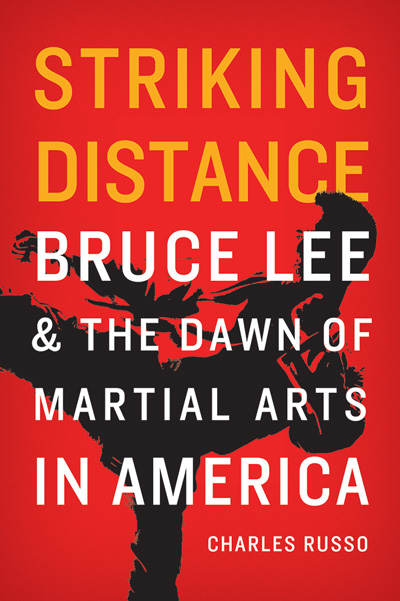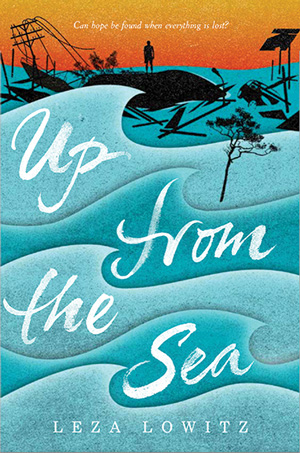Martial Arts Myth-Buster
 When award-winning journalist Charles Russo(B.A. ’01; M.A. ’09) started working on “Striking Distance: Bruce Lee and the Dawn of Martial Arts in America,” he initially imagined “Bruce Lee’s ‘Motorcycle Diaries’,” bringing fans inside the action star’s un-chronicled youth.
When award-winning journalist Charles Russo(B.A. ’01; M.A. ’09) started working on “Striking Distance: Bruce Lee and the Dawn of Martial Arts in America,” he initially imagined “Bruce Lee’s ‘Motorcycle Diaries’,” bringing fans inside the action star’s un-chronicled youth.
“Now I see it as the kung fu version of Clint Eastwood’s Unforgiven,” says Russo, who studied history and photography as an undergraduate, then returned for graduate studies to SF State’s nationally regarded photojournalism program. “Just as ‘Unforgiven’ did for Westerns, my book breaks open what’s real and what’s mythology in martial arts.”
Newly published by the University of Nebraska Press, “Striking Distance” follows the teenage Lee from 1959 to 1964, as he moves back to the Bay Area and becomes a brash, trash-talking phenomenon on the burgeoning street-fighting scene. Based on more than 100 interviews, and written with novelistic flair, “Striking Distance” offers a new angle on the action star and a portrait of the Bay Area as epicenter of the kung fu craze.
Russo was first struck by the idea for the book in an SF State photojournalism class, when a peer brought in an old photo of Chinatown. “He told us, ‘That’s the hospital where Bruce Lee was born,’” Russo says. “I was fascinated and wondered why I’d never heard that. I thought that might be a good story to look at someday.”
Two years later, when Russo was working as photo editor of the Half Moon Bay Review, a friend showed him a YouTube video of Bruce Lee pretending to play ping-pong with nunchucks.
“I found myself rattling off [the research I’d done] on how Lee had been born in Chinatown, grew up in Hong Kong, but gotten his start in San Francisco,” Russo says. “It was such a fascinating culture, full of old Tong gangsters, young Bruce Lee and a bunch of Oakland streetfighters. I thought, ‘That’s a book I would like to read.’”
The story-driven writing style of “Striking Distance” was inspired by popular histories like Erik Larson’s “The Devil in the White City.” But the skills for reporting and shaping the book were forged in classes with SF State journalism professors Ken R. Kobre and Yumi Wilson. Kobre even helped Russo land a short-lived job as a photo editor for the White House.
“Charlie tries to get things in context,” Kobre says of his former student. “He goes beyond the immediate and puts incidents in a bigger picture.”
Rising from a San Francisco Bay Guardian intern to a well-published magazine writer whose credits include Rolling Stone and Vice, Russo has won many Peninsula Press Club honors for his features, like a story on the Zodiac killings that ran in San Francisco Magazine and attracted the attention of the literary agent who asked if he was working on any longer projects.
Russo quickly told the agent about Bruce Lee’s story, drawn back to it even though he had, by his own admission, “never been much of a martial artist.” Rather, what drew him as a writer into the world of martial arts was a little known truth: That despite the entertaining allure of his showy moves, Bruce Lee was at heart a scrappy realist who believed the point of martial arts techniques should be winning fights, not wowing onlookers.
“On the one hand, in martial arts culture, Bruce Lee was a reformer, trying to teach what works,” Russo says. “But he was so good he built up his own mythology in the process.”

We’re Also Reading
Allene (Thrasher) Symons’(B.A., ’67) irresistible tale — part psychedelics history, part family biography — inspired by photos her father took of hands, called “Aldous Huxley’s Hands: His Quest for Perception and the Origin and Return of Psychedelic Science” (Prometheus Books, ’15).
“Building the Golden Gate Bridge: A Workers’ Oral History” (University of Washington Press, ’15) by Harvey Schwartz(attended ’59-’60), an homage to Depression era laborers, told in their own voices.
Juan Alvarado Valdivia’s (B.A., ’02) “¡Cancerlandia!” (University of New Mexico Press, ’15), a “memoir of mixed maladies” (says one reviewer) that candidly recounts his confrontation with self-destructive tendencies and a diagnosis of Hodgkin’s lymphoma just after turning 30.
“Up From the Sea” (Crown Books for Young Readers, ’16), Leza Lowitz’s (M.A., ’88) mesmerizing novel-in-verse, a touching account of one teen boy’s survival following the 2011 Japanese tsunami.